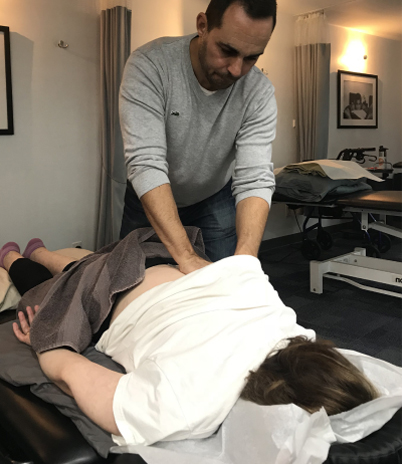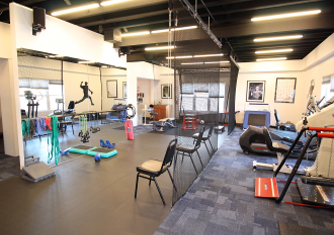TMJ Physical Therapy is a beneficial treatment used to tackle Temporomandibular Joint Disorder, commonly referred to as TMD. The Temporomandibular Joint, or TMJ, acts as a sliding hinge connecting the jawbone (mandible) to the temporal bone at the base of the skull located at the front of each ear. These two joints, along with several muscles, allow the mandible to move up and down, side to side, and forward and back. They serve as the pillar for all forms of functional jaw movements, including swallowing and opening/closing of the mouth to chew, talk, and yawn. Because these two joints are under constant daily usage and stress, they can become overworked and lead to dysfunction, poor teeth alignment, fractures, lockjaw, poor posture, and more.
During your initial consultation for TMJ physical therapy, your therapist will review your medical history, and discuss any previous injuries, surgeries, or fractures involving your head, neck, or jaw. In addition, they will conduct a thorough physical examination of the soft tissue and muscles to determine possible causes of your complaints. Your physical therapist may use hands-on techniques termed manual therapy, to stretch the jaw, break up scar tissue, and relieve pain.
While TMJ physical therapy is one of the best solutions to restore function and help ease the effects of TMD, surgery may be necessary for more severe cases.
Brooklyn Body Works Physical Therapy is staffed with a professional and caring team of experts with clinical experience in TMJ Physical Therapy. Browse through our physical therapist profiles to learn how they can help you with restoring functionality.
Through numerous techniques and treatments, your physical therapist can assist in restoring the natural movement of your jaw. Based on your condition, an individualized treatment plan will be created in order to treat your symptoms effectively. With proper education and self management, you will be taught different ways to avoid exerting excessive pressure on the joint to provide relief. Over time, you should see improvements including increased range in jaw movement and motion, muscle strength and flexibility, decrease in pain, headaches, and dizziness, reduced visibility of scarring, better teeth alignment and head and neck posture.
Currently, TMD affects more than 10 million people in the United States, primarily affecting women more than men. It is more commonly diagnosed in individuals ranging from ages 20 to 40 years old.
TMJ Physical Therapy can include techniques or exercises such as:
As these can be signs of something more severe as a heart attack.
Brooklyn Body Works Physical Therapy began as an idea to bring the highest quality physical therapy to all people in our community. We wanted to offer the best that NYC has in health care while not marginalizing people based on socioeconomic boundaries (race, income, language, religion, etc). We offer a “concierge style service” and continue to accept many commercial insurances, medicare and even medicaid policies.



Since this is a physical therapy session which will require a physical examination and therapeutic exercise (varies by patient), we ask all our patients to come prepared. Please come dressed in loose fitted clothing that will allow for easy mobility, comfort, and access to the area of complaint. In addition we recommend sneakers with soles that grip to prevent slips or falls.
The need for a referral depends on what type of insurance you have. Most insurance plans do not require one, however some insurances do. For example, if you have HIP, you will need a referral from your primary care physician. We ask that you check to see what your health insurance plan requires prior to your initial visit. If you are unsure, please contact our front office and we’ll do our best to determine whether or not you require a referral.
To get in contact with us, click on the following link to view information pertaining to each office.
Each patients case and diagnosis is unique and requires the development of an individualized plan of care. Your physical therapist will give you an estimate of the number of sessions needed to reach a level of “feeling better”, during your initial evaluation.
Over time the number of visits may increase or decrease from the initial estimate, based on the progress made.
Brooklyn Body Works Physical Therapy accepts many of the available major insurance plans as well as alternate payment options, including cash/self-pay, to make our services accessible and affordable. Please visit the link below to view all information pertaining to Payment Options.